Annotating every page of the 2007 semiotext(e) edition of I LOVE DICK
Don't wanna be here? Send us removal request.
Video
issuu
The first zine is here! We hope you like it. Download it from Issuu at the link above, or download from Google Drive (together with the Indesign files if you wanna print/mashup/hack it yourself) here xxx
42 notes
·
View notes
Text
Note 16 - page 31 - Sauve Qui Peut
youtube
“...in order to continue making art she would have to be supported by her husband. “Who’s independent?” Isabelle Huppert’s pimp demanded, spanking her in the backseat of a car in Sauve Qui Peut. “The maid? The bueaucrat? The banker? No!” Yeah. In late capitalism, was anyone truly free?”
- pg. 31
Last chance to submit to the I LOVE DICK zine
4 notes
·
View notes
Text
***Call for Submissions***
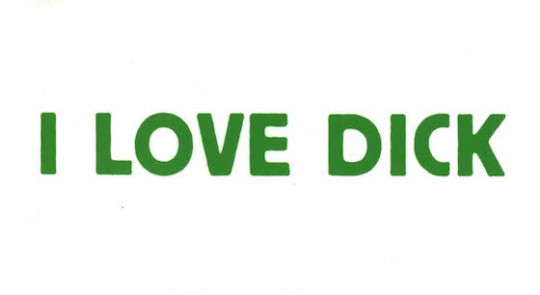
I LOVE I LOVE DICK: AN I LOVE DICK FAN ZINE
Where were you the first time you read I Love Dick? Whose life did you prepare to ruin?
When you read I Love Dick, you are either knocked out by it, or you are not. We are writing to the knocked-out ones. “Study as a Fan Club meeting--the only kind,” Kraus writes.
This is a call for essays, blog posts, poetry, letters, diary entries, screenshots, marginalia, excerpts, text messages, status updates, visual art, photography, collages, interviews, horoscopes, performance fragments, and general ephemera that explore questions, methods, characters, and ideas raised in I Love Dick.
With the book’s impending adaptation for Amazon TV, we want to gather pieces that revel in the destructive weight of the feminist confessional form, that “handle vulnerability like philosophy, at some remove” (208), that describe “what happens between women,” (208) that do “performative philosophy,” (211) that “expose the conditions of our own debasement” (211), and that foreground “women talking, being paradoxical, inexplicable, flip, self-destructive, but above all else public” (210)--for Kraus, “the most revolutionary thing in the world.”
Here’s how I remember it. The text rains down like an event, whether you read it with the breathless, sex-addled speed of its purportedly real-life plot twists or the patience of an exegete, following each aesthetic thread Kraus weaves into her narrative, trying to pull them all together. The book lends itself to exaggeration, maybe because it covers so much ground, because it does so much. Eileen Myles, introducing the text, doesn’t hesitate to let Kraus stand in for Christ, even though Kraus’s take on Christ is that you “love him because he’s beautiful” (113) and she writes from a subject-position that does battle with beauty. Beautiful or not, it’s easy to see Kraus as a saviour of some kind, partially because in this book she gives her textual body so that we, the lonely girls, phenomenologists of feminized vulnerability, might witness the process of self-exploration as a means for theorizing the interiors of the social. Unlike Christ, she doesn’t promise to save us: she only promises to show us.
Email submissions to [email protected] by April 19 2016!
71 notes
·
View notes
Text
Note 15 - Page 30 - the Ramones and Kierkegaard
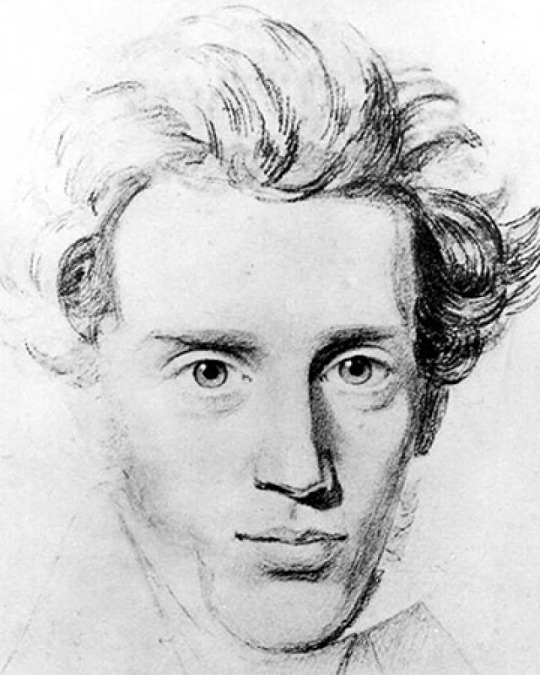
“The Ramones give Needles & Pins the possibility of irony, but the irony doesn’t undercut the song’s emotion, it makes it stronger and more true. Søren Kierkegaard called this ‘the Third Remove’. In his book The Crisis In The Life Of an Actress, he claims no actress can play 14-year-old Juliette until she’s at least 32. Because acting’s art, and art involves reaching through some distance.”
- pg. 30
Since I’d spent a great deal of time reading literature, history, philosophy, “my subjectivity” included all of those things, but only as channeled through my own body. Before making films, I’d studied performance for several years with the visionary theater artists of Mabou Mines, The Wooster Group, and The Performance Group. And as I wrote, I found myself deploying many of the conceits I’d learned in acting and film—the use of montage, speaking through masks or personas, a very high slapstick routine of shifting identities. If I was going to be accused of stalking said “Dick,” well then, I’d play the part of the stalker. One of the most important things I learned in studying theater is to seize the impulses that arise during performance, and then move with them. A gesture turns into a mask. So I turned myself into a lab rat. I was very naive. I thought I was doing a high giddy job of performing philosophy. Naturally this writing was very physical, and I was terribly shocked when it was widely perceived at face value, as a cheap confession. Because in the book I talked over and over again about operating at a Third Remove, using a Kierkegaardian sense of irony when dealing with the banal facts that comprise straight female life: the Crush, when will he call me?
Q+A: CHRIS KRAUS
9 notes
·
View notes
Text
Note 14 - Page 29 - the Ramones
youtube
She started off by rhapsodizing once again about Dick’s face: “I started looking at your face that in the restaurant - oh wow, isn’t that like the first line in the Ramones song, Needle & Pins? ‘I saw your face/It was the face I loved/And I knew’”
- pg.29
1 note
·
View note
Text
Note 13 - Page 28 - Baudrillard
“Sylvère, who’s typing this, says this letter lacks a point. What reaction am I looking for? He thinks this letter is too literary, too Baudrillardian. He says I’m squashing out all the trembly little things he found so touching. It’s not the Dumb Cunt Exegesis he expected. “
- Pg. 28
The Chance Event
The Chance Event: Three Days in the Desert: Primm, Nevada, November 1996. Curated by Chris Kraus, Chance brought together Jean Baudrillard, Rosanne Alluquere Stone, DJ Spooky, Diane di Prima, the Moapa Band of Paiute Indians, visual artists, garage noise bands and 600 participants to investigate the mystery of chance at Whiskey Pete's Casino. Variously described as "a philosophy rave" and "one of the landmark LA events of the 90s," The Chance Event was reviewed on the front page of the LA Times and throughout the art press. Highlights, including a performance by Baudrillard wearing a gold Elvis-inspired blazer and accompanied by the 'Chance' band, were broadcast on European television. The event was funded by the French Cultural Service and Art Center College of Design.
CHRIS KRAUS ON BAUDRILLARD - SEMIOTEXT(E)
At The Chance Event at Whiskey Pete’s Casino in Primm, Nevada, November 1996, 400 people lay on the floor at 2 in the morning to hear Jean Baudrillard deliver a lecture on the Demise of the Real. Because of the drugs, the lateness of hour, Jean’s heavy French accent, the bad last-minute translation and the fact that few of us were trained as philosophers, the people assembled at best heard every fifth word. The response was ecstatic. Jean was wearing a gold lame Liberace suit, and though he was a reluctant guru, he was willing to accept what the audience gave him: a pure, undiluted unconditional love. Think, Johnny Cash performing at Folsom Prison. (We were prisoners of our highly evolved senses of irony.) The Santa Claus factor. Baudrillard was – like William S. Burroughs at the end of his life – one of those rare public figures whose presence conveys a promise of happiness beyond any literal content, beyond any hype. His books were written in aphorisms — the kind of texts where every page is marked with a Post-It, every sentence is underlined. For his last public appearances in New York in November, 2005, hundreds of young people lined up in the streets outside his venues. It was clear that they’d come not just to hear his (breathtaking) lecture on Abu Ghraib, but to be able to say years later: they’d been there, they’d heard Jean Baudrillard. Modest, independent, and devastatingly humorous, Jean’s work transmitted the lost urbanity of the mid-20th century while speaking of and into the future. His writings described the present with breathtaking accuracy without ever becoming programmatic. No wonder fans gathered around him. Cheerfully nihilistic, Baudrillard’s work gave us ways our own vague perceptions could become something larger, systemic and totally crystalline.
Write your own Baudrillardian text for our zine
2 notes
·
View notes
Text
Note 12 - page 27 - SOME GIRLS
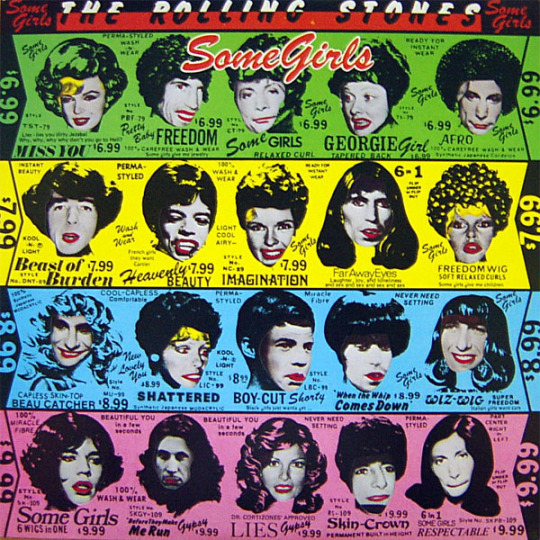
“What touched me were all the windows of vulnerability in your house...so Spartan and self-conscious. The propped up Some Girls album cover, the dusky walls - how out of date and déclassé.”
- pg. 27
Girls wanted for our zine
2 notes
·
View notes
Text
Note 11 - page 26-27 - The Golden Bowl
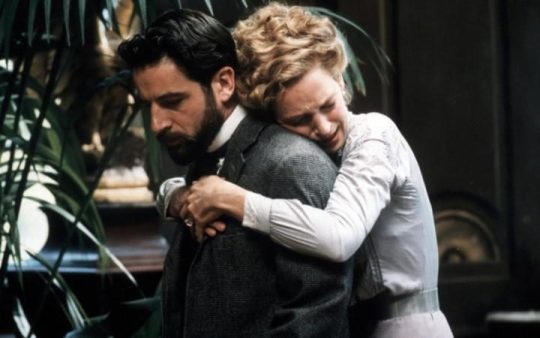
“Since Slyvère wrote the first letter, I’m thrown into this weird position. Reactive - like Charlotte Stant to Slyvère’s Maggie Verver, if we were living in the Henry James novel The Golden Bowl - the Dumb cunt, a factory of emotions evoked by all the men. So the only thing that I can do is tell The Dumb Cunt’s Tale. But how?”
- pg. 26-27
"She had already accepted her consciousness, as we have already noted, that a crisis for them all was in the air; and when such hours weren't depressing, which was the form indeed in which she had mainly known them, they were apparently in a high degree exhilarating."
- The Golden Bowl, Henry James, Volume One, Book Third, Chapter One.
0 notes
Text
Note 10 - page 25 - Sylvère and Proust
“Sylvère, a European intellectual who teaches Proust, is skilled in the analysis of love’s minutiae”
- pg. 25
Yes, reality was just another simulation. Baudrillard and Artaud were on the same wavelength, except that Artaud is considered a savage, and Baudrillard a cynic. Connecting the two was a revelation. They belonged to the same family, and so does Virilio. They were all longing for materiality, but they chronicled its disappearance faster than anyone else. In the 1970s, I was teaching Artaud, Céline, Weil, Bataille, et al., at Columbia University, and I was also teaching postwar French theory, which I was introducing in America. It seemed to me then that my attention was split in two. Like Janus, I was looking both ways, and they didn’t relate to each other. I was wrong. If you go far enough in one direction, you reach the other way. This is what I learned from Proust and Clausewitz. Going to the extreme as a way of understanding the present. I call that extrapolationism.
0 notes
Text
Note 9 - Page 23 - David Rattray
“She addresses this story, intermittently, to David Rattray because she’d convinced that David’s ghost had been with her last night for the car ride, pushing her pickup truck further all the way up Highway 5. Chris, David’s ghost and the truck had merged into a single unit moving forward”
- Pg. 23
youtube
From “In the Curvature of the Curve,” 1993, by David Rattray.
Lines written on the back of a map left unfolded by design (for L.) See along the horizon above Edmond’s Col that solitary pair of wings beating? See the stream slipping/round that single dark brown leaf? Iron in the water Sov-foto at dusk, trout jumping for gnats/ in the apple jelly air that never stays, the crow sores, dips and oh /clears this icy rill / burning in the gaze where my life trembles inside yours.
2 notes
·
View notes
Audio
(Alternat-EVE)
Note 8 - page 21-22 - Barbara Barg
“…she’s reminded of all the fuzzy one-time fucks she’s had with men who’re out the door before her eyes are open. She recites a poem by Barbara Barg on this subject to Sylvère:
What do you do with a Kerouac But go back and back to the sack with Jack How do you know when Jack has come? You look on your pillow and Jack is gone….”
-pg. 21
1 note
·
View note
Text
Note 7 - page 21 - Jane Eyre
(Years later Chris would realize that her fondness for bad art is exactly like Jane Eyre’s, attraction to Rochester, a mean horse-faced junky: bad characters invite invention.)
- pg. 21
“It does good to no woman to be flattered [by a man] who does not intend to marry her; and it is madness in all women to let a secret love kindle within them, which, if unreturned and unknown, must devour the life that feeds it; and, if discovered and responded to, must lead, ignis-fatuus-like, into miry wilds whence there is no extrication.”
― Charlotte Brontë, Jane Eyre
2 notes
·
View notes
Text
Note 6 - Page 20 - Johnny Cash
At 2 a.m., Dick plays them a video of himself dressed as Johnny Cash commissioned by English public television.
- pg. 20
youtube
0 notes
Text
Note 5 - Page 20 - Eric Rohmer
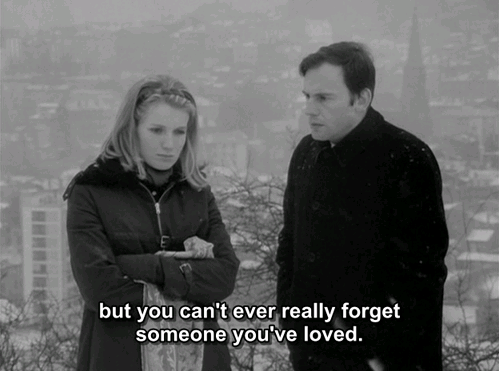
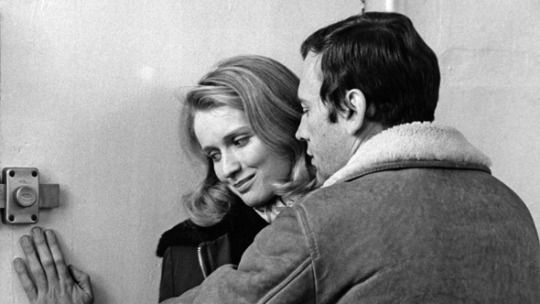
youtube
Back at Dick’s, the night unfolds like the boozy Christmas Eve in Eric Rohmer’s film My Night at Maud’s.
- pg.20
The atmosphere during the dinner is charged with sexual tension. It is obvious that both Vidal and Jean-Louis are attracted to Maud. The conversation turns to religion. Jean-Louis affirms his commitment to Catholicism, saying that he has not been chaste in the past, but neither has he been promiscuous, insofar that he has only had a few long-term relationships. He says that he is not a saint. But he will no longer succumb to temptation, because he is now converted and wants to meet and marry a Catholic woman. Vidal and Maud, who are both atheists and sexually liberated, start teasing him by saying that he must have already met this woman, because he has a dreamy look, as if he is already in love. Jean-Louis vehemently denies it.
0 notes
Text
Note 4 - John Donne’s eyeballs
Dick’s Thunderbird was always somewhere in her line of sight, the two vehicles strung invisibly together across the concrete riverbed of highway, like John Donne’s eyeballs.
- p. 20
The Ecstasy
by John Donne
Our hands were firmly cemented With a fast balm, which thence did spring; Our eye-beams twisted, and did thread Our eyes upon one double string; So to'intergraft our hands, as yet Was all the means to make us one, And pictures in our eyes to get Was all our propagation.
At the pinnacle of love, Donne believes a state of ‘ecstasy’ exists between the lovers that embraces all dimensions of their being one with each other. The corporate whole of this relationship overpowers the individual elements that make it up even including sexual consummation. Donne’s exponential power of love that has approached and been consumed by ‘ecstasy’ far exceeds ordinary definitions of love, so much so, that often ‘spectators’ are positioned in his poetry to be stupefied by the lovers’ intimate and personal eroticism.[1]
[1] There is a long literary tradition from which Donne borrows in his dealing with the manifestation of the mystery of love. Among them are ‘In a grove most rich of shade’ (Astrophil and Stella, Song 8) by Sidney, Lord Herbert’s Ode upon a Question Moved, Wither’s “When Philomela with her strains” (Fair Virtue, Son. 3). Also see the debate on the motives of love taken up by Plato’s Phaedrus.
1 note
·
View note
Text
Note 3 - Post-Riot Los Angeles
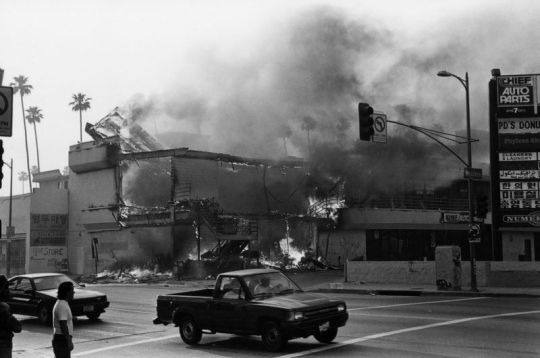
The request line on 92.3 The Beat was thumping, Post-Riot Los Angeles, a city strung on fiber optic nerves.
- p.20
The violence, despair and destruction that exploded in Los Angeles on April 29, 1992 left indelible memories on Angelenos and on Americans right across the country.
1 note
·
View note
Text
Note 2 - St Mark’s Poetry Project
Slightly buzzed and keeping the accelerator of her pickup truck steady, she’s reminded of a performance she did called Car Chase at the St. Mark’s Poetry Project in New York when she was 23. She and her friend Liza Martin had tailed the steelily good-looking driver of a Porsche all the way through Connecticut on Highway 95.
p.20
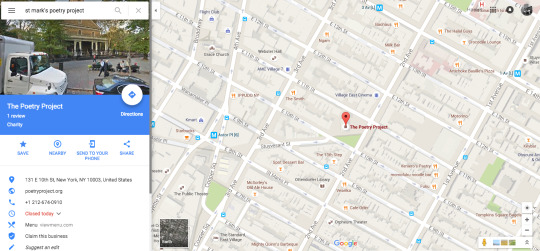
2 notes
·
View notes